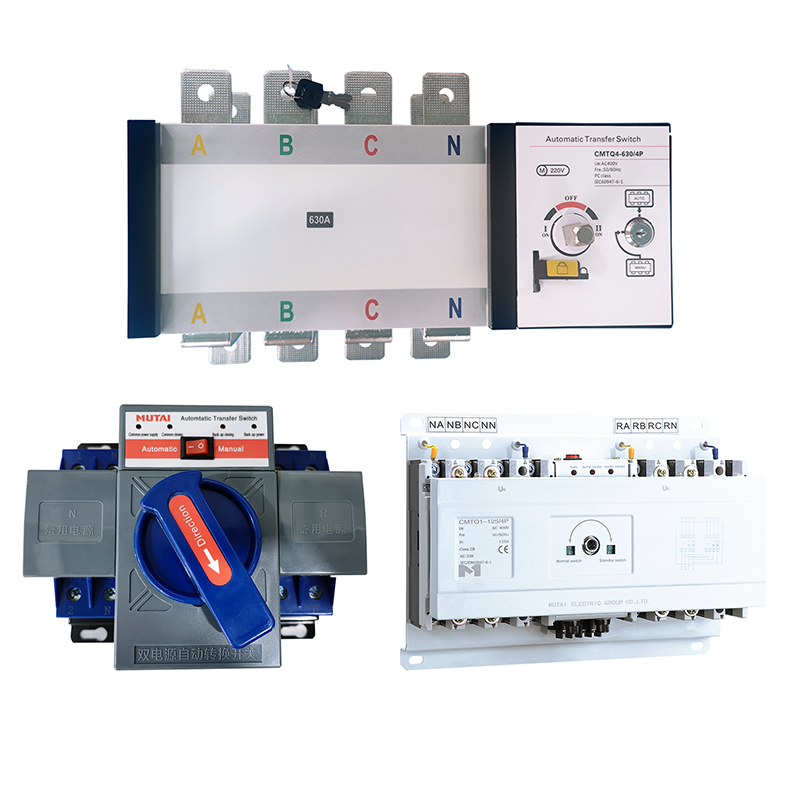ATS (Automatic Transfer Switch) is an important component in any power system involving multiple power sources. In the event of a power outage or other disruption, it allows power to be transferred seamlessly between these power sources. Two commonly used ATS types are CB-class and PC-class dual power automatic transfer switches. In this article, we’ll explore the advantages, disadvantages, and differences between these two types.
There are some obvious differences between CB-level dual power automatic transfer switches and PC-level ones. A key difference is contact pressure. Circuit breakers (MCCB) used in CB-level switches generally cannot withstand short-term withstand current, resulting in lower contact pressure and easier repulsion or push away. PC-grade switches, on the other hand, can withstand overload currents of 20Ie and above and require greater contact pressure, making them less likely to be repelled.
Another difference is the choice of contact material. CB class dual power automatic transfer switch circuit breakers usually use silver tungsten and silver tungsten carbide materials. These materials were chosen for their ability to effectively extinguish arcs. However, they are susceptible to oxidation, which can affect their performance. In contrast, PC-grade switches consider the consequences of oxidation and select contact materials accordingly.
The design philosophy behind the two types of switches is also different. The CB-class dual power automatic transfer switch is composed of a circuit breaker and is responsible for breaking the arc. This design requires the mechanism to be able to trip quickly, which can lead to problems such as sliding buckles. PC-grade switches, on the other hand, do not face such issues as they do not rely on circuit breakers for arc breaking purposes.
Clearance and creepage distances (the distance required for safe electrical operation) also differ between the two types of switches. The general electrical clearance and creepage distance of PC-level dual power automatic transfer switches are 180% and 150% respectively of the circuit breaker standard requirements. This is to prevent power superposition problems between the two power supplies during the conversion process.
In summary, CB-level and PC-level dual power automatic transfer switches have obvious advantages and disadvantages. Class CB switches may have smaller contact pressures, requirements for specific contact materials, potential oxidation issues, and design challenges associated with circuit breakers. PC-grade switches, on the other hand, offer higher contact pressure, enhanced overcurrent performance, considerations for contact material oxidation, and a design that eliminates the need for a circuit breaker for arc interruption. The choice between these two types depends on the specific requirements of the power system and the potential risks associated with each type.
Post time: Nov-21-2023




